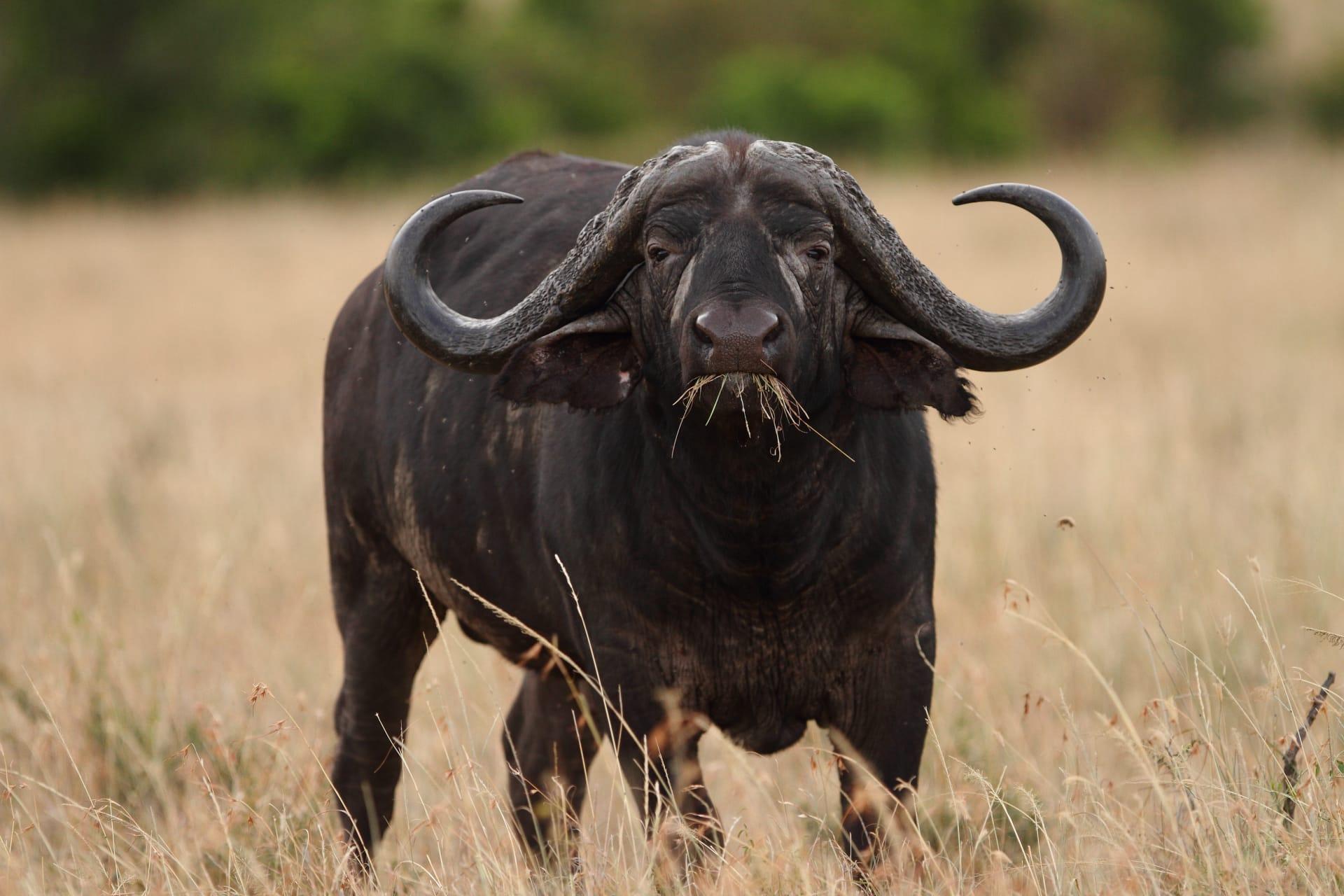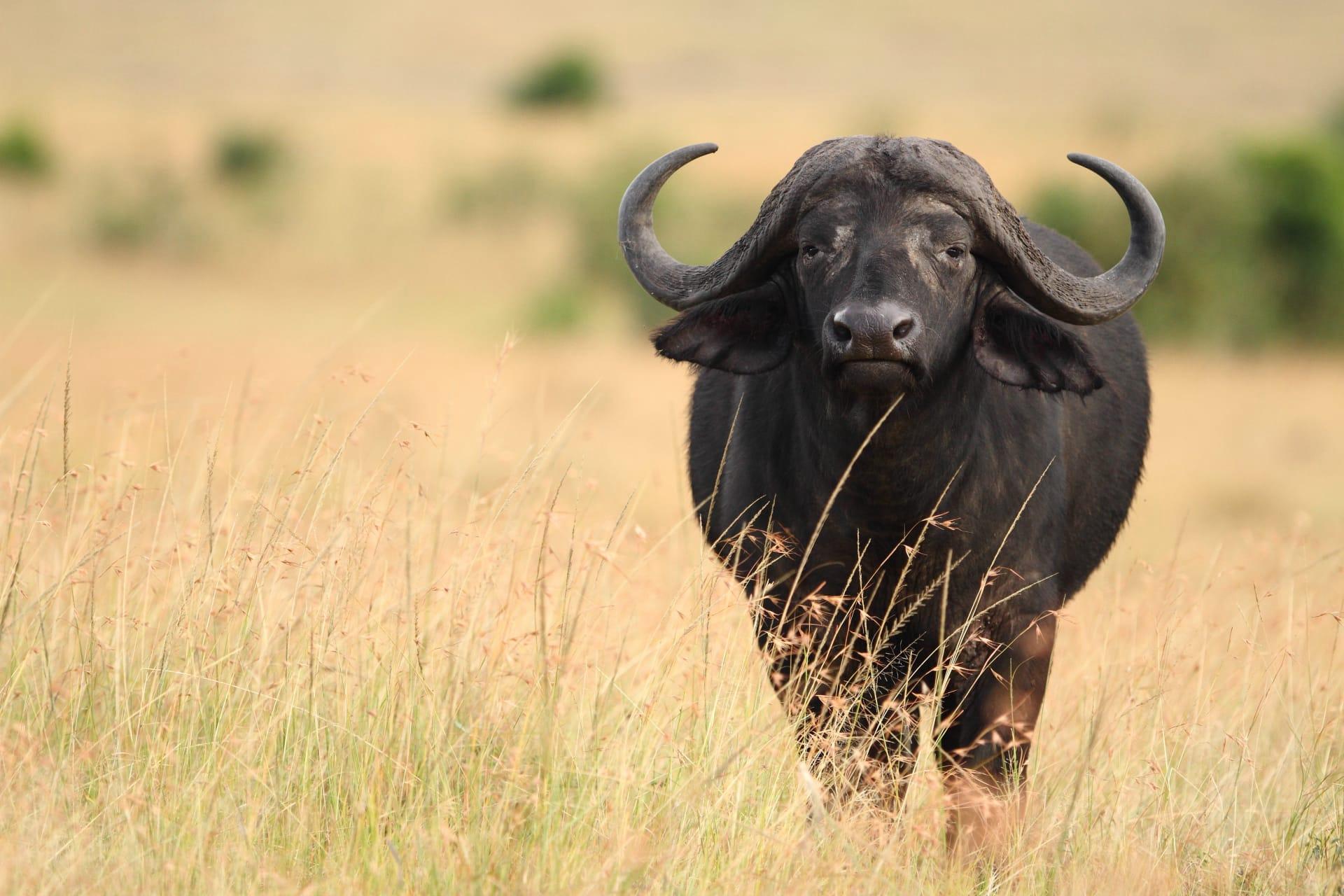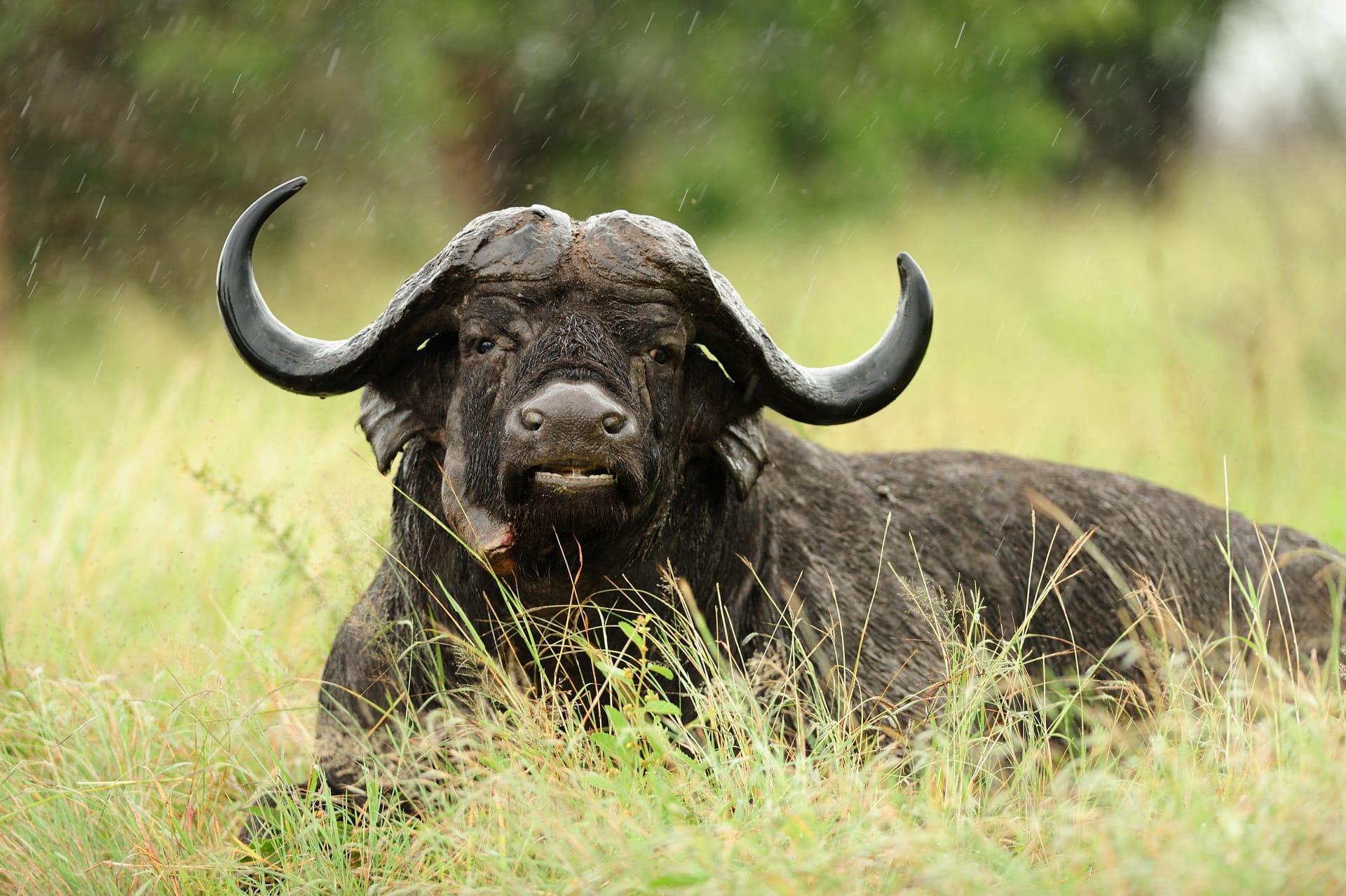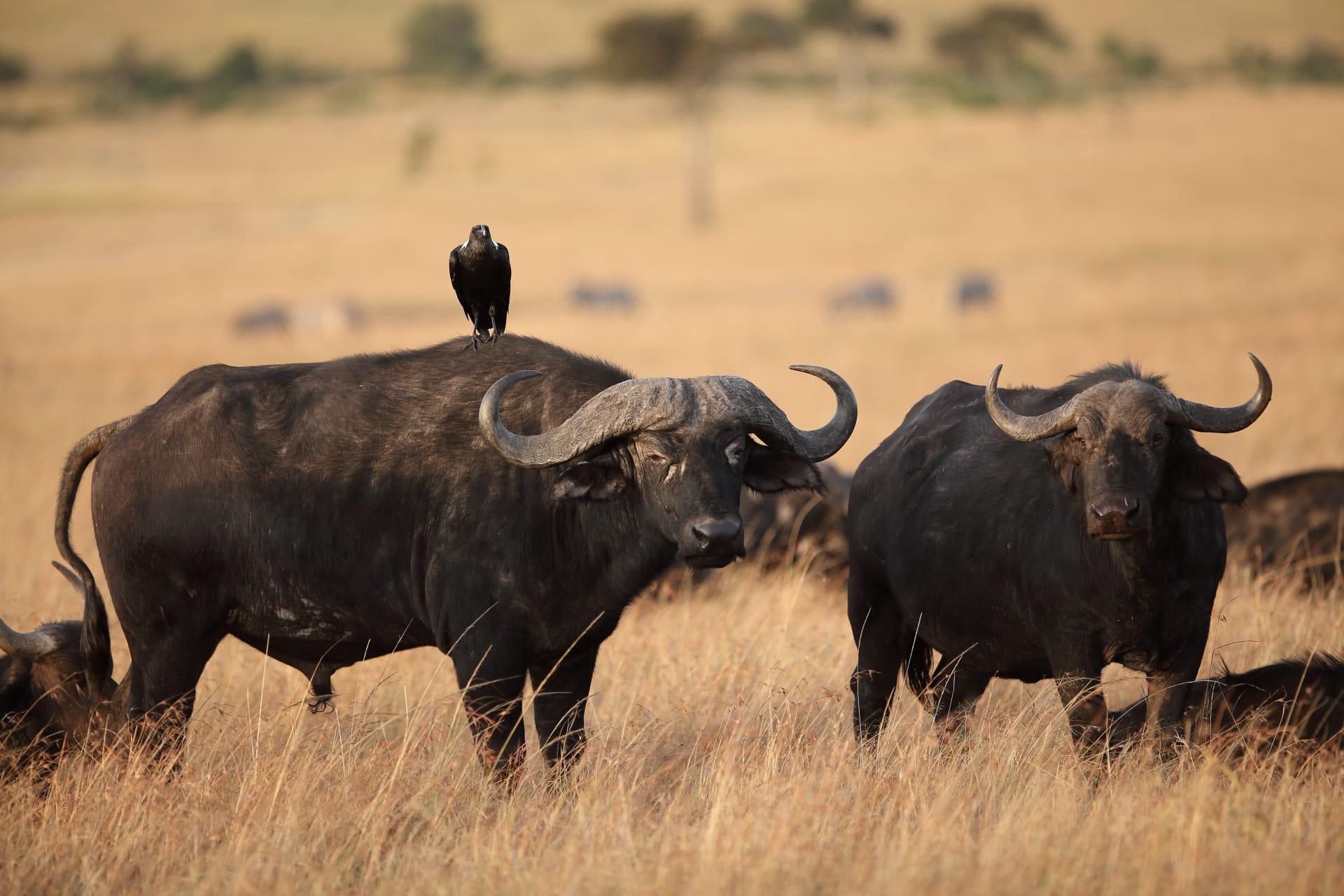African Buffalo
- Home /
- Mini Encyclopedia /
- Animal /
- African Buffalo
1
The African Buffalo, scientifically known as Syncerus caffer, belongs to the Bovidae family, which includes other hoofed animals like goats, sheep, and cattle. There are four recognized subspecies of the African Buffalo: the Cape buffalo (S. c. caffer), the Forest buffalo (S. c. nanus), the West African Savannah buffalo (S. c. brachyceros), and the Central African Savannah buffalo (S. c. aequinoctialis). These subspecies vary in size, color, and habitat preferences, adapting uniquely to their environments.
The African Buffalo's distribution spans across sub-Saharan Africa. The Cape buffalo is predominantly found in Southern and East Africa, thriving in grasslands, swamps, and floodplains. The smaller Forest buffalo resides in the rainforests of Central and West Africa, adapting to a denser and more humid environment. The West African Savannah buffalo inhabits the savannahs of West Africa, while the Central African Savannah buffalo is located in Central Africa's savannahs. Their habitats range from sea level to mountainous terrains, up to an altitude of 4,000 meters.

2
Question: Do African Buffalos display aggressive behavior only during mating seasons?
Answer: It's a common misconception that African Buffalos are aggressive solely during mating seasons. While males exhibit heightened aggression during this period for dominance and mating rights, African Buffalos can be unpredictable and defensive in various situations. They are known for their protective nature, especially when defending their young or the herd against predators. Their reputation as one of Africa's most dangerous animals stems from their strength, size, and defensive aggression, not limited to any particular season.

3
The African Buffalo employs several survival strategies to thrive in the wild. They are social animals, living in large herds that can number in the hundreds. This social structure offers protection against predators like lions and crocodiles. Herd members coordinate their movements and can mount a formidable defense against attacks. Buffalos also have a strong sense of smell and hearing, which helps in detecting predators. They are grazers, feeding mainly on grasses, and can travel long distances to find food and water, showcasing remarkable resilience in various environments.
Another key survival strategy is their wallowing behavior. African Buffalos frequently wallow in mud, which helps regulate their body temperature and protect their skin from parasites and biting insects. This behavior also aids in shedding their old fur and maintaining a healthy coat. Their adaptable diet, allowing them to consume lower quality vegetation during dry seasons, further underscores their resilience in the diverse African landscapes.

4
In the African ecosystem, the African Buffalo plays a pivotal role in maintaining the balance of the environment. As a major herbivore, their grazing habits significantly shape the vegetation structure of their habitat. This grazing can lead to more diverse plant species and habitats, which benefits a wide range of other wildlife. Their movement across the landscape helps in seed dispersal, contributing to the spread of various plant species.
The African Buffalo also influences predator populations, particularly lions and hyenas, as a key prey species. Their presence helps sustain healthy predator populations, which is crucial for the ecological balance. Additionally, their wallowing creates water holes that benefit other species during dry periods. Their interactions with other species, both as prey and as ecological engineers, underline their importance in the African savannahs and forests.

5
Film: One noteworthy documentary on African Buffalos is "The Last Stand of the African Buffalo," produced in the United States in 2018. This film explores the challenges faced by these animals, including habitat loss and poaching. It highlights their social structure, survival strategies, and the critical role they play in the African ecosystem.
Book: "Buffalo Nation: History and Legend of the African Buffalo" by John Hartman, published in the UK in 2020, delves into the rich history and cultural significance of the African Buffalo. Hartman combines scientific research with anecdotal evidence to portray the buffalo's impact on African landscapes and cultures.
Book: Another significant work is "Savannah Sentinels: The African Buffalo's Fight for Survival" by Sarah Thompson, released in Australia in 2021. Thompson's book focuses on the conservation efforts for African Buffalos, discussing the threats they face and the measures needed to protect these magnificent creatures. The book provides a comprehensive overview of their behavior, habitat, and the urgent need for their conservation.